Animals
Animals
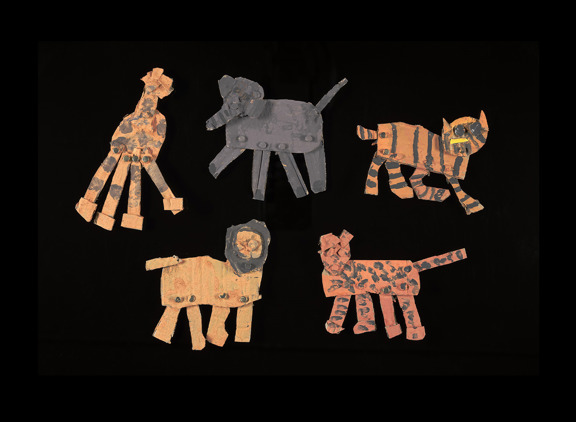
Holy Trinity CE Primary School, London, ages 4–5
Articulated animals
We found out about tigers and other animals that live in the jungle and discussed their shapes, colours and features. We then chose an animal to draw, which we turned into a cardboard model with moving parts.
'I looked carefully at a leopard so I could paint all the spots and make it look real.'
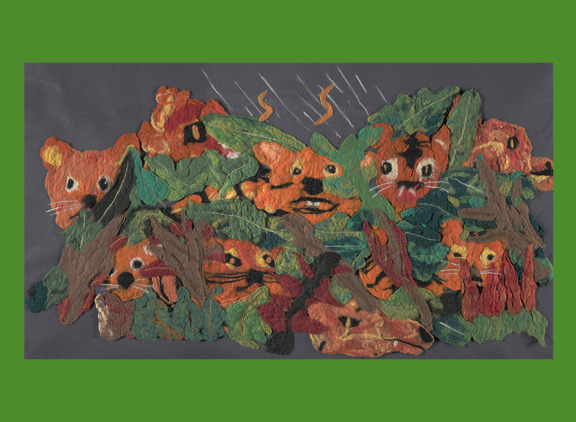
The Queen’s Lower School, Chester, ages 10–11
Felt artwork
Rousseau’s painting inspired our class to experiment with wet felting. We layered wool fibres to create our tiger and plant designs, before spraying them with soapy water. We rolled the wool to bind the fibres and attached our separate pieces together to make a collaborative wall hanging.
'The process of making felt in colours to match the original painting was really fun and interesting.'
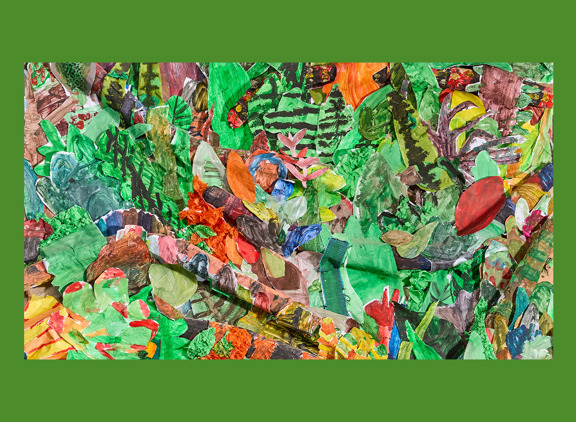
Peasedown St John Primary School, Bath, ages 6–7
'Tail or snake?'
When the children saw the painting, they debated whether they could see a tail or a snake. This was the inspiration for their collaborative collage, made from Modroc and a range of materials.
'I hope we can trick people with our collage!'
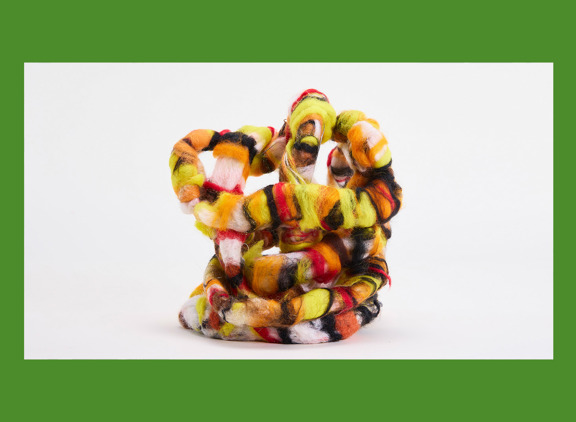
Headley Park Primary School, Bristol, ages 4–11
‘A venomous snake! That tail isn’t fluffy enough!'
At first, as the picture was revealed slowly, the children thought that the tiger’s tail was a snake. The pupils wanted to make tiger tails that they thought would be fluffier and more realistic than Rousseau’s. The tails are made from felt and wire.
'We used soapy water, friction and warmth to make the wool fibres tangle.'
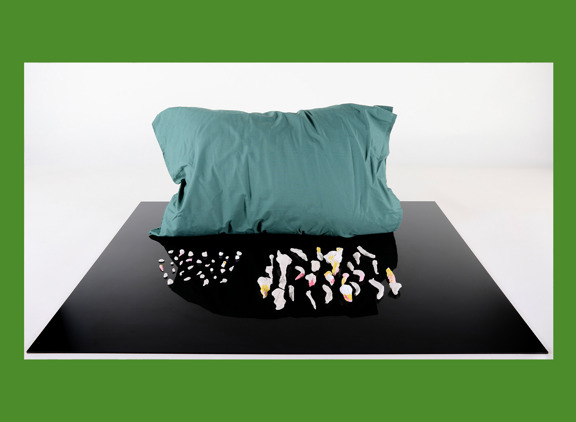
East Preston Infant School, West Sussex, ages 5–6
Tiger tooth fairy
We were fascinated by the tiger’s teeth and wondered if tigers have a tooth fairy! We decided to make tiger and human teeth out of clay for our artwork, which we displayed under a pillow, ready for the tooth fairy to collect.
‘I like the tiger’s toothies – they are so sharp and shiny and he has loads of whiskers!’
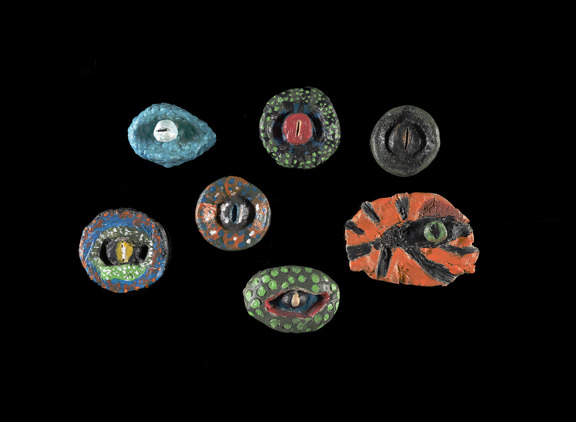
Falconer’s Hill Academy, Northamptonshire, ages 9–11
Animal eyes
Year 6 were intrigued by the tiger’s eye, which led them to research different kinds of animal eyes, and discover why they can be various shapes and sizes. They then drew detailed pictures of the eyes of rainforest animals. Year 5 were so inspired by Year 6’s drawings that they created clay eye sculptures!
‘I enjoyed sculpting the clay eye and imagining the beautiful animals. I used tools to add delicate details and texture.’
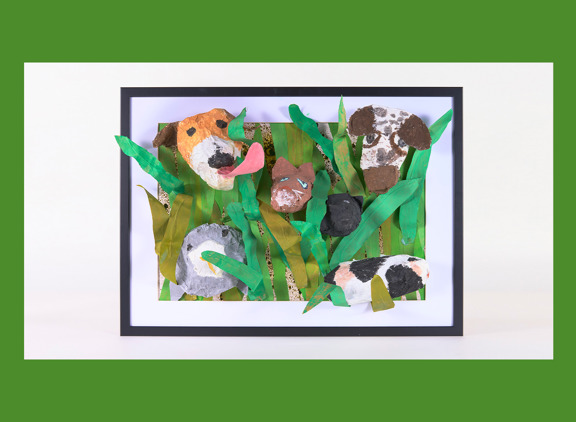
Durham High School, Durham, ages 9–10
Our beloved animals
As a class, we wondered how our pets would feel if they were in the jungle. We then talked about how Rousseau might have used photography to help him paint his tiger, so we took photographs of our pets to help us make our papier mâché models.
‘When we looked at the picture, I imagined my cat instead of the tiger.’
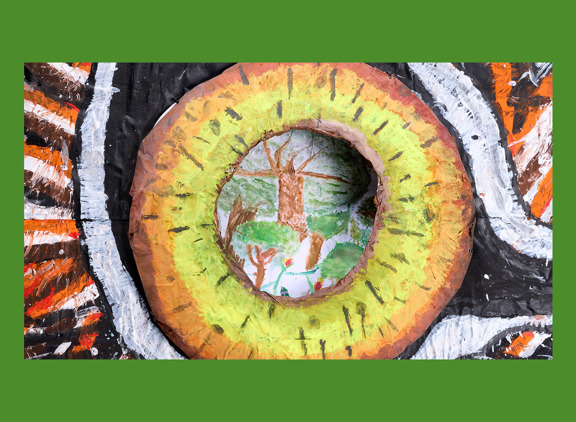
Morley Memorial Primary School, Cambridge, ages 9–10
Tiger’s eye sculpture
The children thought that the tiger stood out from the dark and stormy background, and questioned what it was staring at. They decided to create a 3D sculpture of the tiger’s eye, reflecting the rainforest surrounding it.
‘We developed our watercolour skills… We also had to work on collaborating and compromising on what we wanted the final piece to look like.’
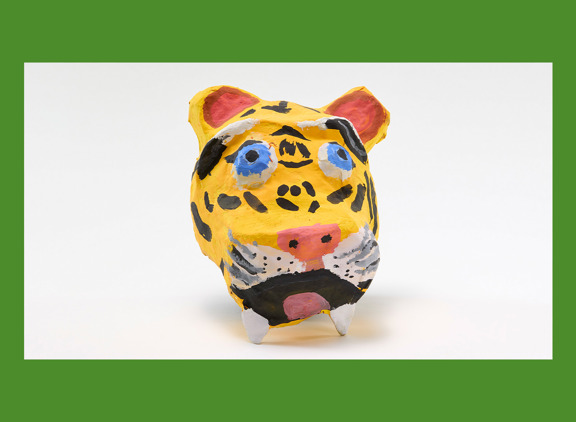
Weston Favell C of E Primary School, Northampton, ages 8–9
Tiger masks and tea towel
One child compared Rousseau’s tiger to a mask they had seen from Odisha in India. These masks are typically made from papier mâché and are decorated in bright colours for theatrical performances. This inspired the children to create masks of their own. They also designed a tiger tea towel to sell to the community, raising money for tiger conservation.
‘We made our masks from old materials which we upcycled. It was fun because we learnt how to mix the colours.’
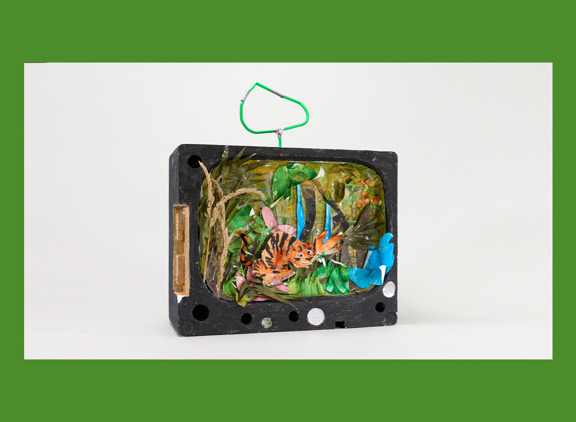
Woodford Halse Church of England, Primary Academy, Northamptonshire, ages 3–4
Tiger television
The children realised that they had only ever seen a tiger on the television, so decided to recreate the painting on their own screen! To help create their artwork, they visited the woods to look closely at real leaves.
‘He’s scared of the storm and the rain, it’s loud!’
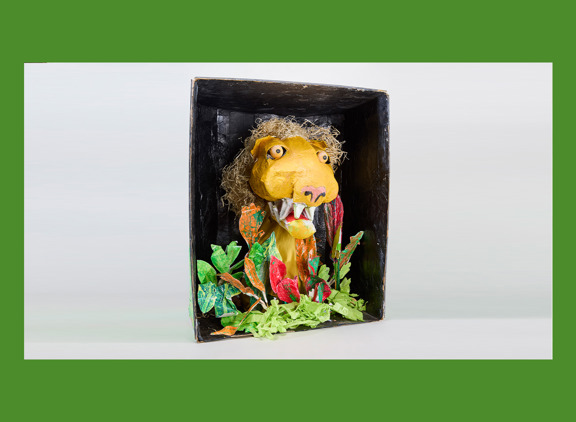
Cedar Road Primary School, Northampton, ages 8–11
Rainforest animal puppets
Art Club had practised making paper puppets and wanted to develop their skills. They created animal puppets and ‘rainforest theatres’ from recycled materials and then acted out reasons why the animals might be surprised. Perhaps they had been startled by lightning or by trees being cut down?
‘I like reusing things to make art instead of just throwing things away.’
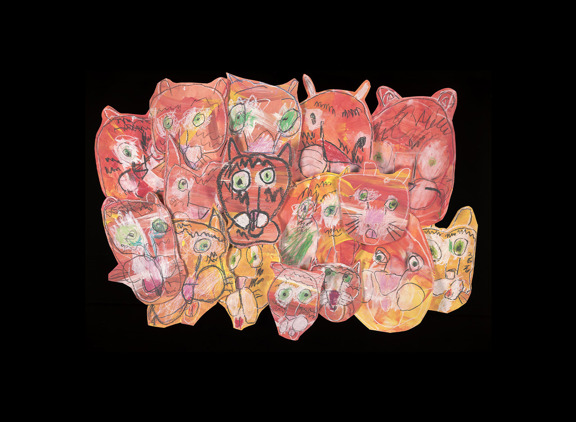
Headley Park Primary School, Bristol, ages 4–11
‘Should there be more tigers in that jungle?’
The whole school questioned whether there should be more tigers in the painting, but we discovered that tigers are endangered. We learnt that there are fewer than 300 Sunda tigers left in the world, so decided to show this by drawing as many of them as we could.
‘Oil crayons on top of rough paper made the tiger colour bright.’
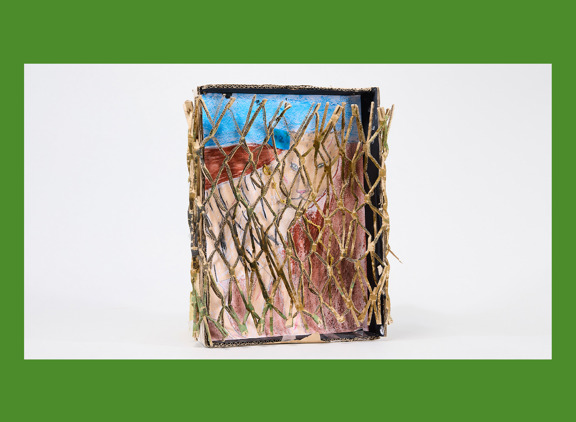
Quay Academy, East Yorkshire, ages 8–11
Captivity
Art Club realised that they had never seen a tiger in the wild. The children researched animals in captivity and were upset to see that some tigers are kept in small, dirty cages. They decided to create models of tigers in captivity to raise awareness.
‘I liked learning about tigers... I enjoyed this project.’
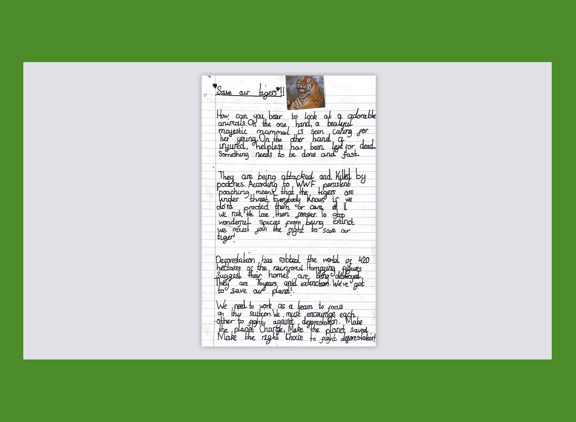
Langland Community School, Milton Keynes, ages 8–9
‘Save the tigers’ speeches
We noticed the tiger’s worried expression and wondered if he was in danger from poachers. We researched the endangerment of tigers and their habitat through deforestation, and wrote speeches to persuade people to save our animals. We even ‘adopted’ a tiger through a conservation charity!
‘I felt so proud that we could help out animals in the rainforest.’
